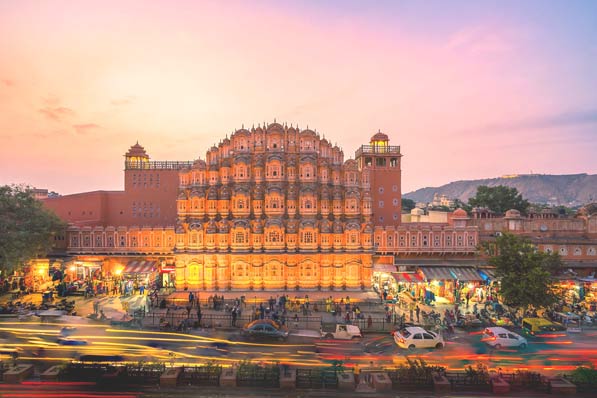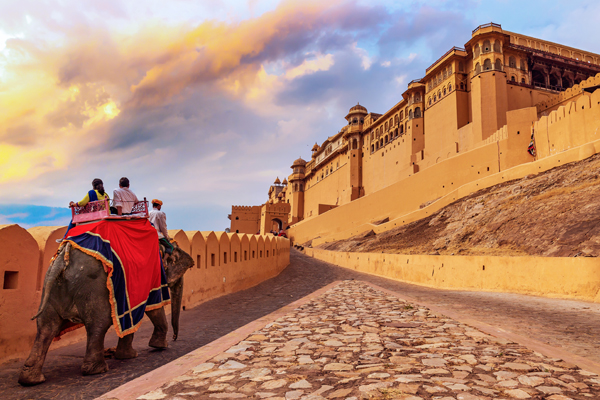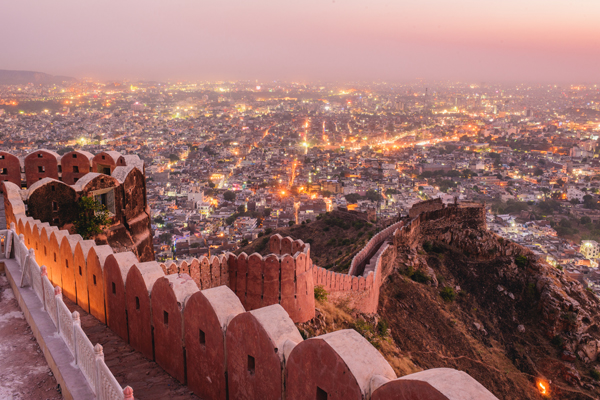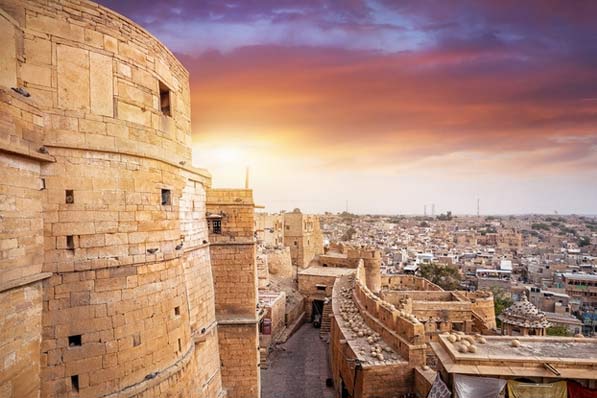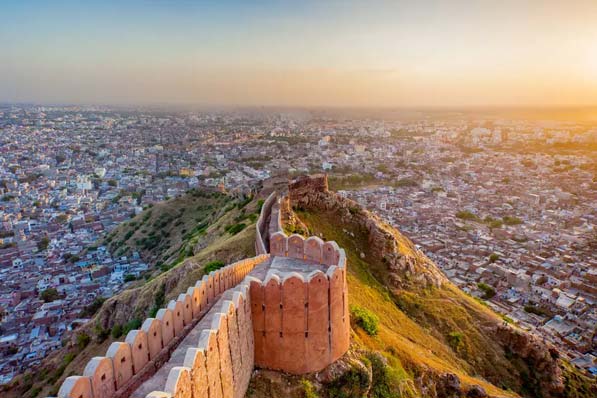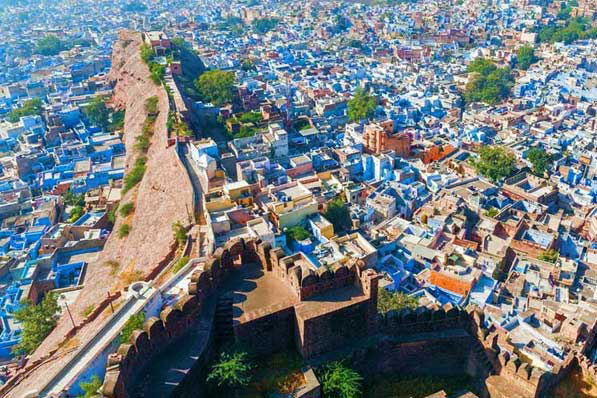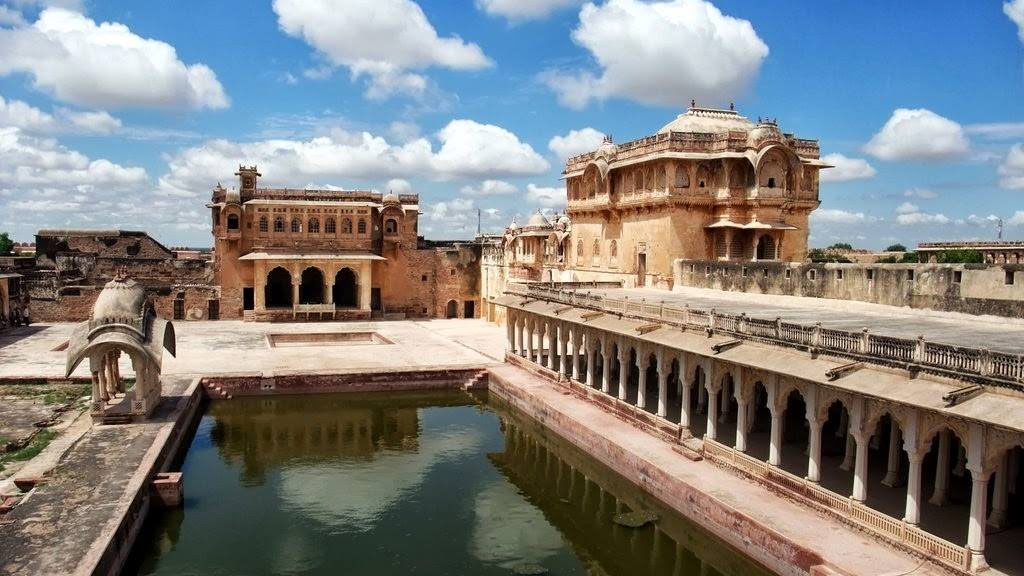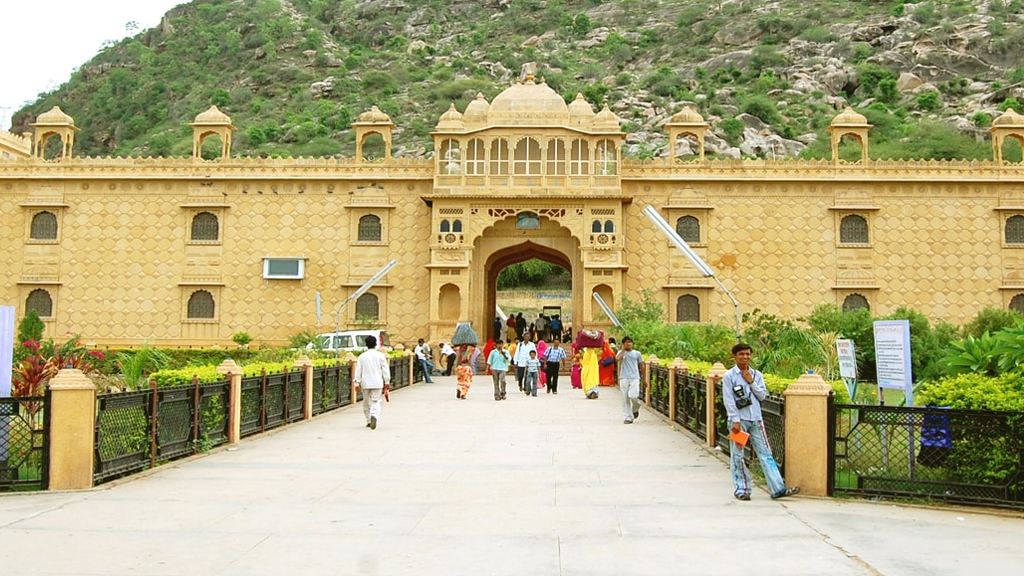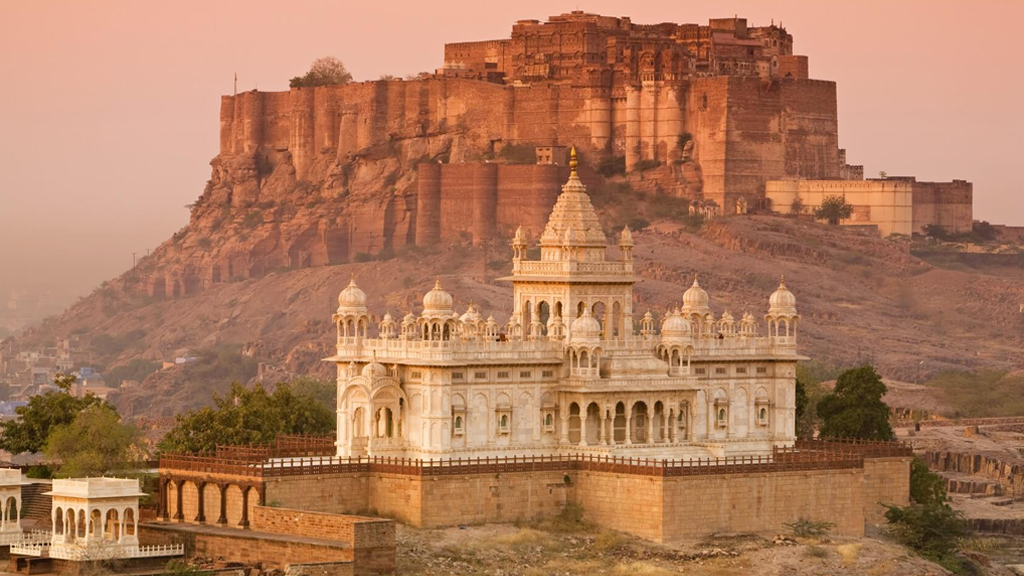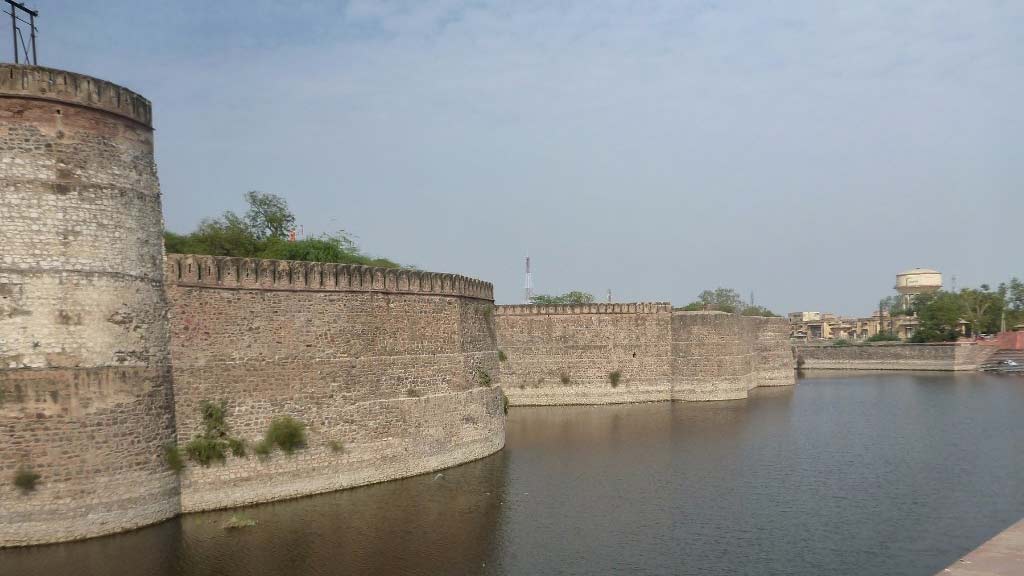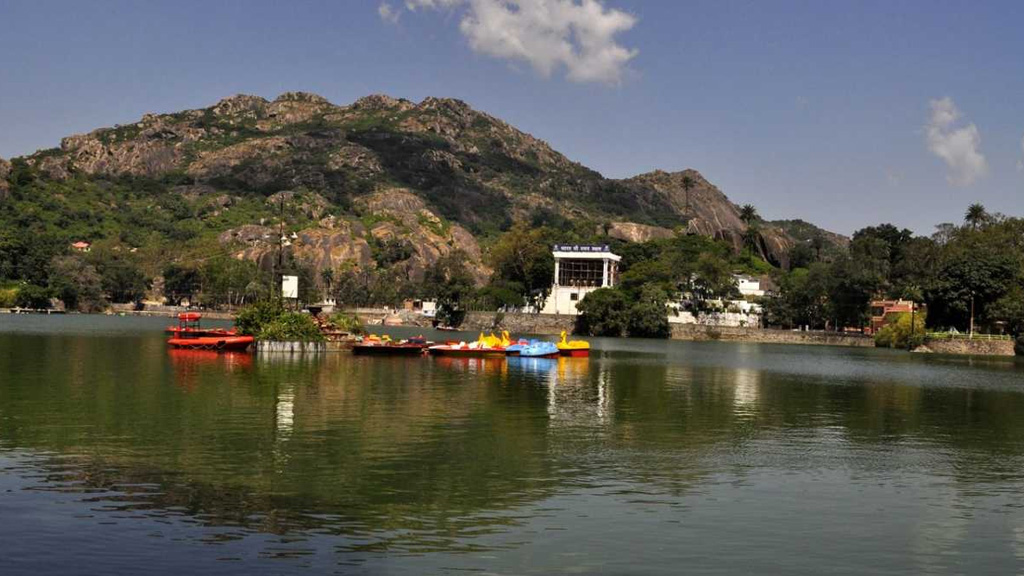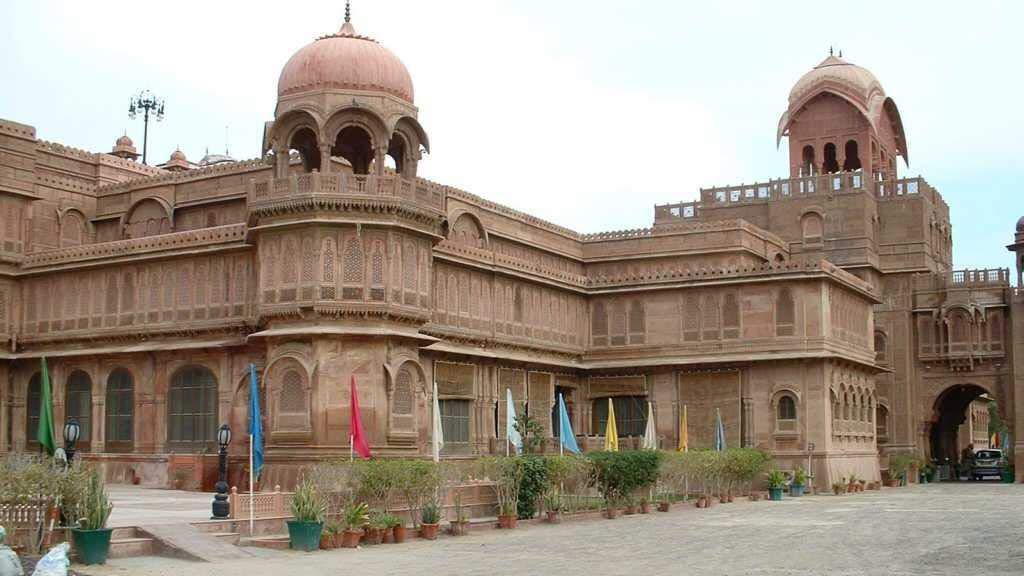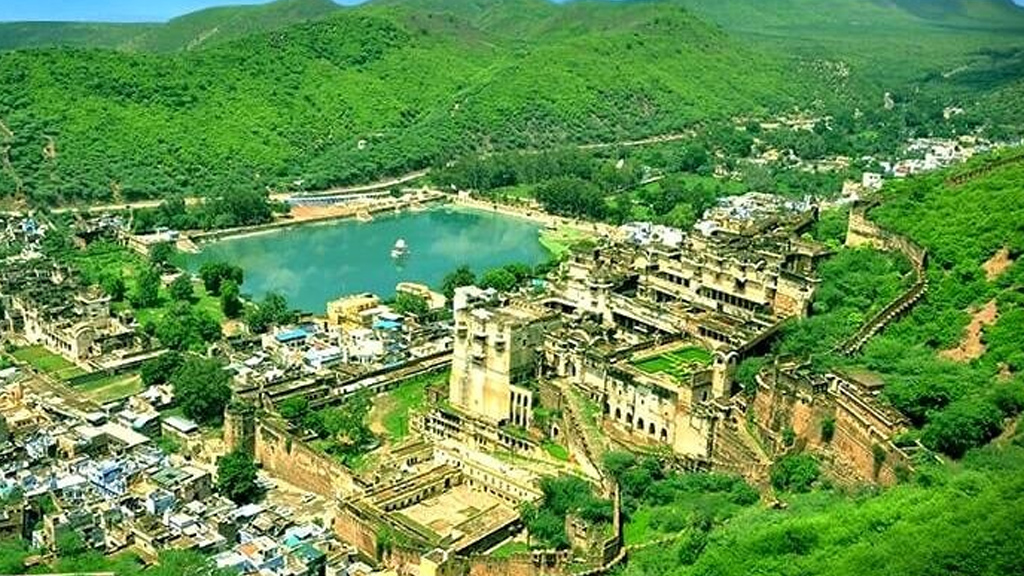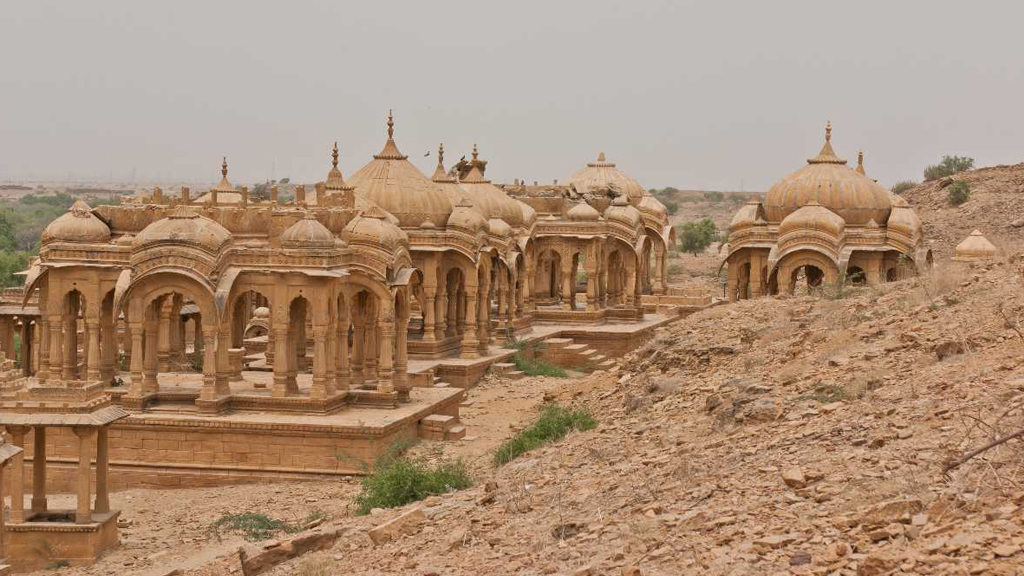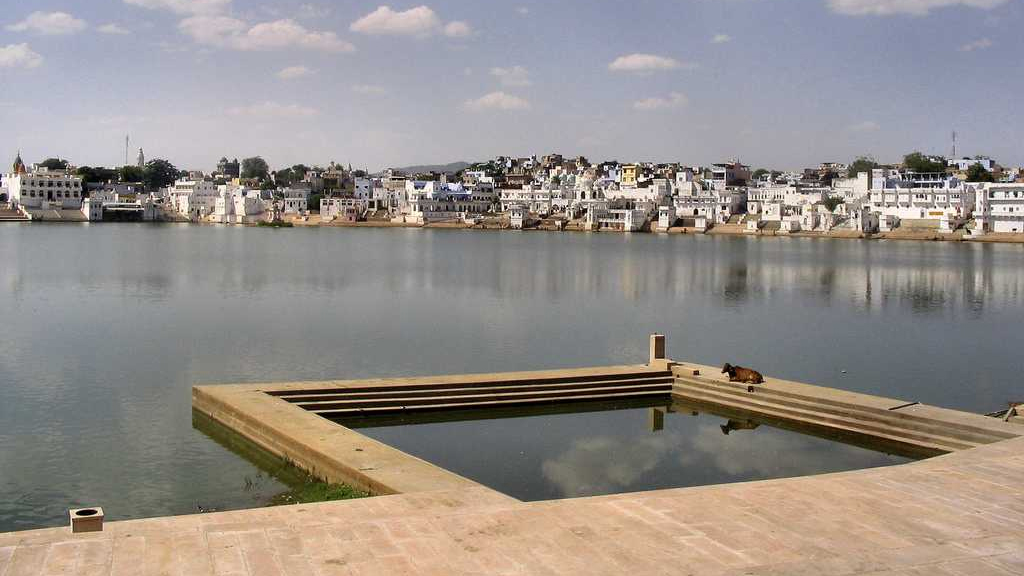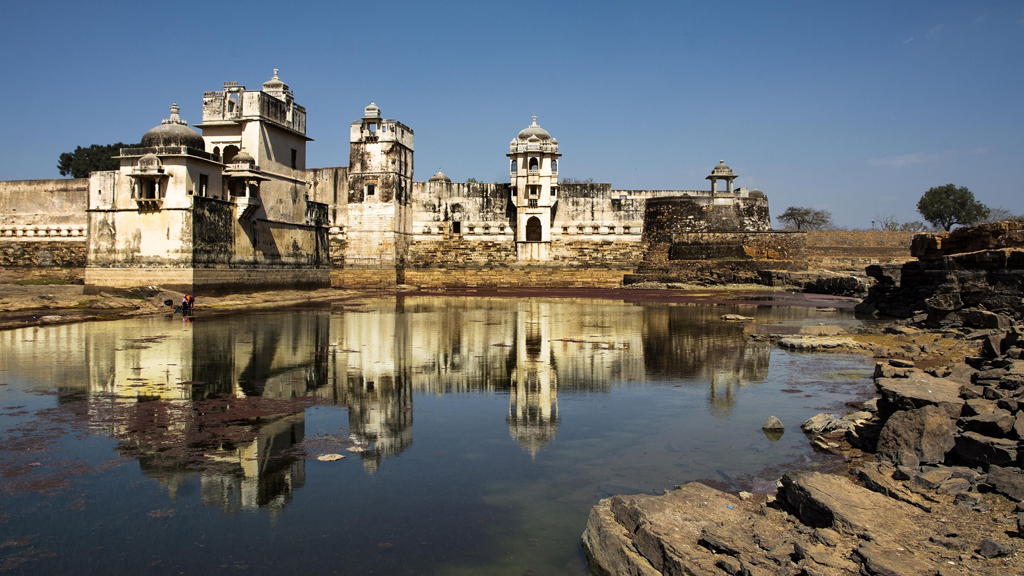Top Places to Visit in Rajasthan- the epitome of rich cultural heritage!
Rajasthan is a mesmerizing kaleidoscope of colour and culture and a treasure trove for the imagination and senses. Step into Rajasthan, the land of raja-maharajas and you will be dazzled by its sheer royalty, heritage and grandness. This royal land has many intriguing stories to tell through its exquisitely built and decorated forts, palaces and havelis. On your Rajasthan tour, its architectural marvels will take you back to the era of raja-maharajas, and a stay at its heritage hotels will surely make you feel like a king or queen. While enjoying the astonishing opulence, gorge on Rajasthani cuisine offering a wide variety of rich and lip-smacking culinary delights which are nirvana to the taste buds. The bazaars of Rajasthan teem with colourful turbaned men, jewellery-laden women in ghagara-choli and a wide variety of amazing Rajasthani handicrafts which are lively expressions of life. Its cities and towns are characterized by consummate craftsmanship while its swaggering camels and prowling tigers inhabit its dunes and forests.
Rajasthan is a land of contrasts which makes it one of the world’s most beguiling travel destinations. Ride a camel over the mystic sand dunes and enjoy a magical sunset, sleep under the star-studded sky, sway to the tunes of Rajasthani folk music, laugh away watching kathputli dance, get amused by watching a snake charmer seamlessly controlling snakes and the list seems endless. Art in some form or another seems to reside in every corner of Rajasthan.
Explore the exotic facade of this royal state of Rajasthan for a lifetime experience! Here are the top places in Rajasthan that you must visit on your Rajasthan tour! This land will set your memories ablaze with its grandeur and liveliness long after you have travelled it.
Jaipur: A colourful story!
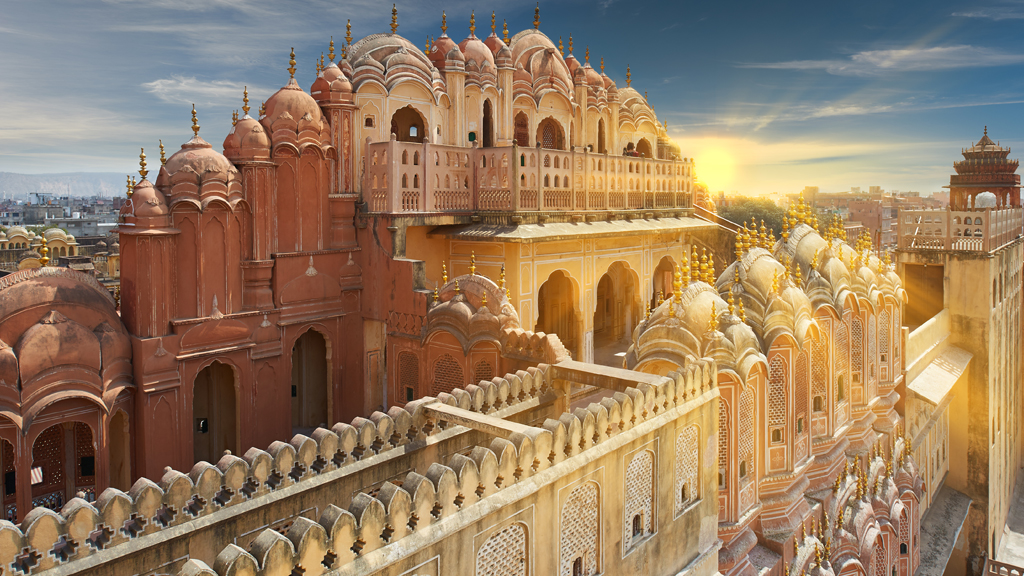
Powerfully evocative, Jaipur is Rajasthan’s capital city with a stellar array of attractions. This glorious city’s most prominent feature is the uniform pink colour of almost every building in the old city adding aesthetic uniformity and bizarre beauty. Referred to as ‘Pink City’, Jaipur was founded by Kachchwaha ruler Jai Singh II in 1727 and he carefully planned this city inspired by ancient Hindu architectural treaties. The romance of Rajasthan’s architecture is beautifully reflected in Jaipur forts, palaces and monuments. Jaipur is one such centre in the world where gemstones are still cut and polished by hand. Its vibrant bazaars are full of uniquely colourful handicrafts and shopping them is one of the major pleasures of the Jaipur tour. This city besides being a treat for the eyes, also promises a feast for the taste buds. Your Jaipur tour itinerary must include the exploration of a gamut of flavours – dal baati churma, spicy chaat, lassi, kachori and much more.
Jaisalmer: Deep in the heart of the desert!
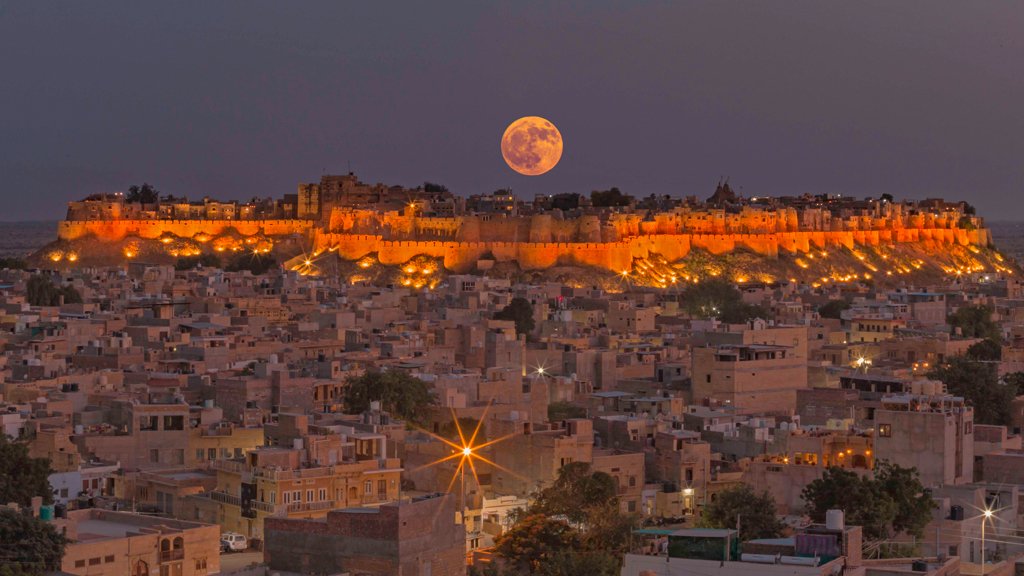
Rising magically out of a sea of endless sand of the Thar Desert, Jaisalmer is an extraordinary gem of Rajasthan. On your Jaisalmer tour, you will be mesmerized to see its fairy-tale palaces and forts of golden sandstone, honey-coloured temples and havelis stunningly echo the colour of the desert sand and appear to spring up from the sand as if in some Arabian Nights fable. No wonder Jaisalmer is famed as the ‘Golden City’. Jaisalmer Fort, a UNESCO World Heritage Site is home to around 3000 people, the biggest inhabited fortress in the world’s deserts. The raw beauty of Jaisalmer is untouched by the modern world, making it a big hit with tourists. This rugged city was founded by the Raja Rawal Jaisal in 1156 AD, and here the forts are still alive.
Go on a local camel safari, spend a night under a dazzling star-studded sky, sway to the tunes of folk music, gaze at the prettily decorated camels adorned like brides during festivals, shop for an extensive range of leatherware and experience the charm of the bygone era on your Jaisalmer tour. Also, don’t miss out on Patwon ki Haveli which is a great example of cocktail architecture having elements of Hindu, European and jews styles. The roofs of its rooms are wooden. The Jain temples dating back to the 12th century are intricately carved and are a feast for the eyes. Jaisalmer attractions seem endless just like its sand dunes.
Udaipur: A fairy-tale come true!
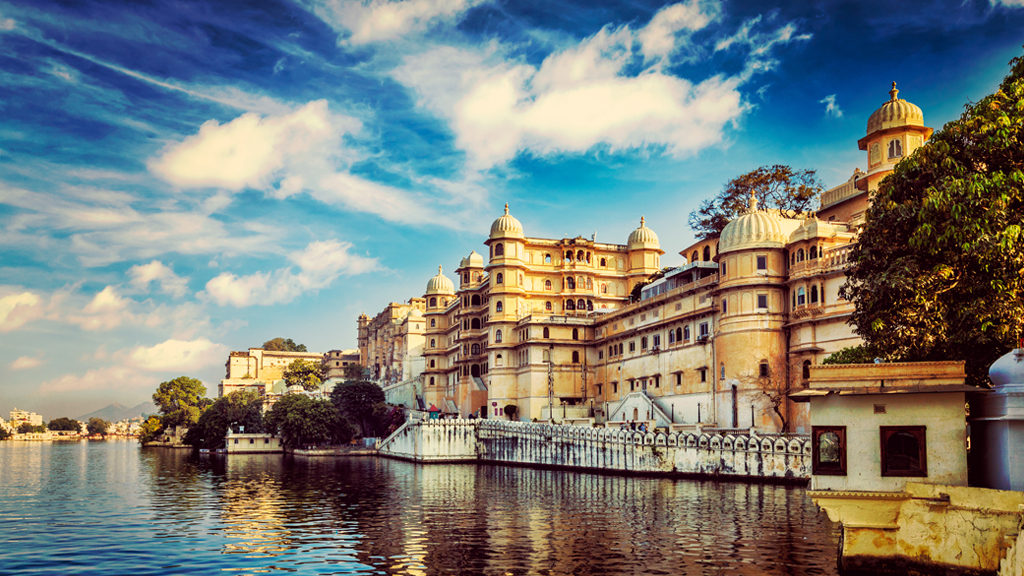
The exquisite lakeside city and the erstwhile capital of the state of Mewar, Udaipur is perhaps the most enchanting destination of Rajasthan. Founded in 1559 by Maharana Udai Singh II, Udaipur is a fairy-tale ensemble of majestic palaces, forts and havelis echoing the glory of the bygone era of raja-maharajas. Here, palaces are found in abundance and some of them are romantic abodes built on islands on a lake inviting attraction of one and all. You will find an interesting profusion of palace architecture because the house of Mewar, which ruled Udaipur, never embraced Mughal sovereignty.
The photogenic attraction of Udaipur is Lake Pichola which not only offers the most memorable views but also provides cool breeze and plentiful water. The marvel of the Lake is the majestic Jag Niwas Palace, now transformed into a world-famous heritage hotel. The bustling bazaars offering colourful Rajasthani handicrafts are one of the incomparable attractions of Udaipur. The more you explore Udaipur, the more astonishing your Udaipur travel experience will be!
Jodhpur: The city of contrasts!
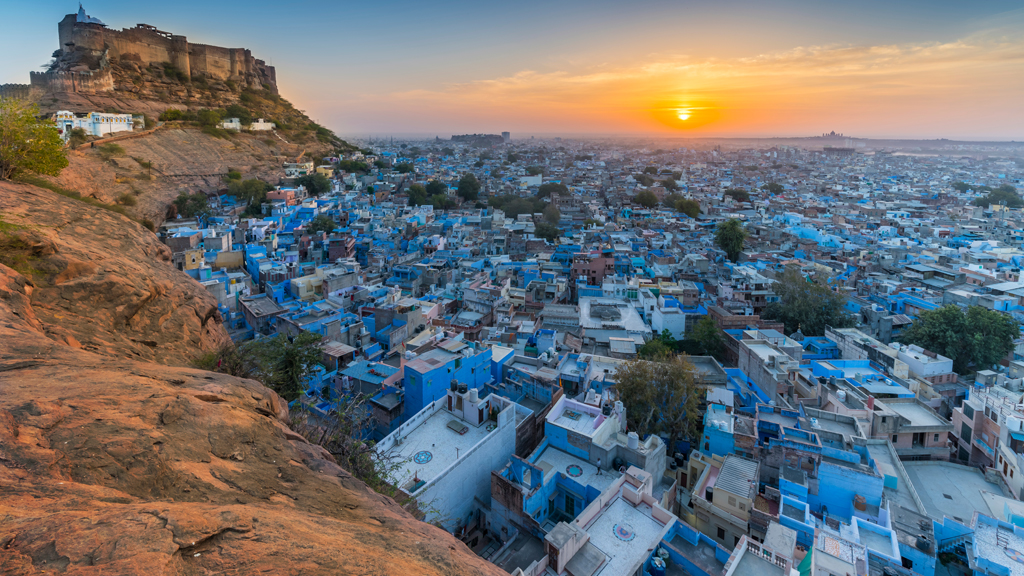
When on your Jodhpur tour, wander through its narrow alley-ways between the bright blue-painted houses, experience a serene and slow pace of life, roam around in medieval streets, and witness the royalty of Jodhpur’s most formidable citadel – Meherangarh Fort and opulent Umaid Bhawan Palace. The credit for the origin of this fabulous city (in 1459) goes to Rao Jodha, the Rajput chief of the Rathore clan. The word Jodhpur is synonymous with the distinctive style of horse-riding trouser, originally invented by Pratap Singh, brother of Jodhpur’s Maharaja Jaswant Singh. These proved a big hit in Britain when introduced by Pratap during a visit to attend Queen Victoria’s Golden Jubilee. Visit the Mochi bazaar and treat your feet with the colourful embroidered juttis (footwear) and many other lovely handicrafts. This city splendidly retains its medieval character and ensures that travelers experience different hues of the culture of Jodhpur on their Rajasthan tour.
Pushkar: A destination you will not forget easily!
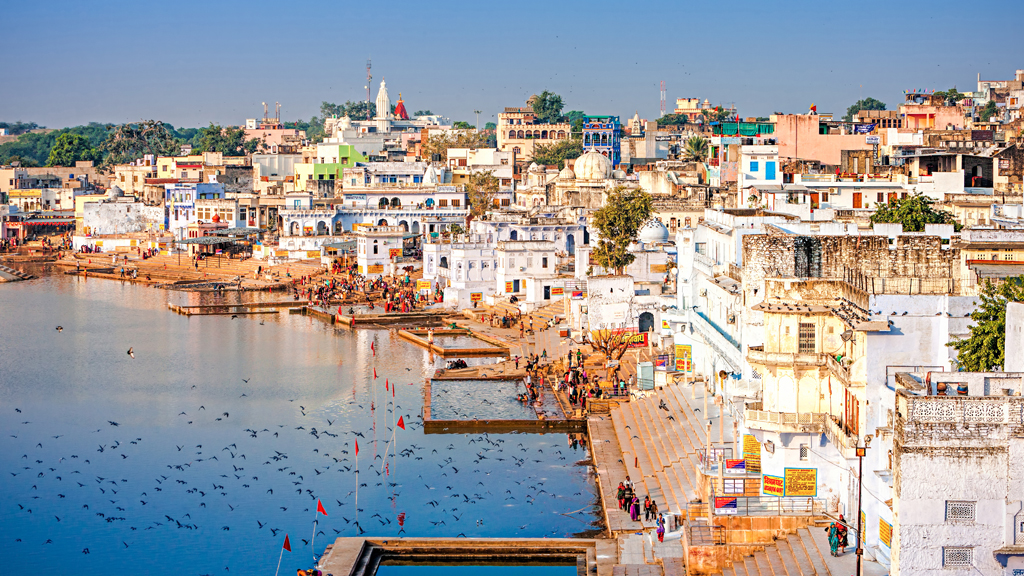
Visit the only Brahma temple in the world to seek blessings, take a holy dip in the Pushkar Lake and get immersed in the vibrant and colourful celebrations of the world-renowned Pushkar Camel Fair on your Pushkar tour. The fair marks the advent of the Kartik Purnima (usually November) during which bathing in the lake is considered auspicious and hence it attracts lakhs of devout Hindus from far and wide. This ancient town finds mention in the Hindu Puranas, Ramayana and Mahabharata and is dotted with more than 400 temples. During the fair, you will find thousands of brightly turbaned men, magnetically dressed women and even camels who are decked up like brides competing for the title of the most beautifully decorated camel transforming the desert into a colourful and lively destination. A hot air balloon ride is a must on your Pushkar travel itinerary to capture this town at its best.
The town buzzes with interesting activities, competitions and a riot of colours. The week-long fair is packed with performances of Rajasthan’s finest folk musicians, cultural performances by tightrope walkers, puppeteers, acrobats, camel rides and many other events. The fair offers a chance to shop for amazing handicrafts by local artisans.
Bikaner: The old city with gold-like attraction

In Bikaner, gape in awe watching dancers perform a death-defying fire dance when they prance on a bed of live, hot coals, enjoy a camel trek on its quiet sand dunes, shop for the finest carpets with paintings, and visit the Deshnok Karni Mata temple where a sight of a white mouse is treated auspicious on your Bikaner tour. Established in 1488 by Rao Bika, Bikaner is called the city of 100 havelis in Rajasthan. Explore its havelis for their precise red stone works, magnificent paintings, floral facades and flamboyant art- Rampuria Havelis deserves a special mention.
Get ready for a mind-blowing experience when you visit the Junagarh Fort, the centerpiece of Bikaner and one of the finest forts to visit on the Rajasthan tour. It is one of the forts of India which was never conquered despite lacking the commanding hilltop setting.
Bharatpur: Nothing beats a fantastic bird’s photo!
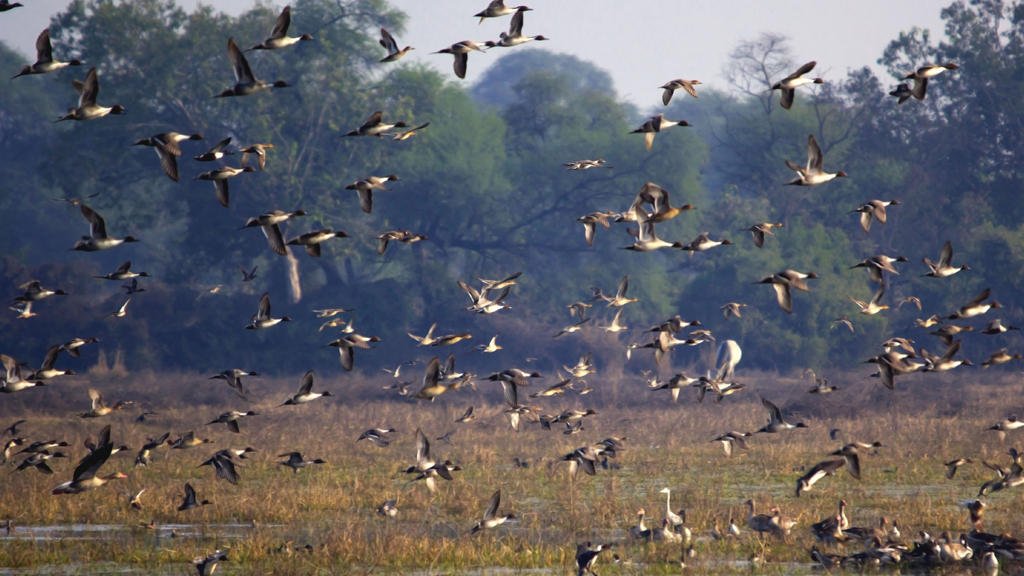
Synonymous with UNESCO World Heritage Site- Keoladeo Ghana National Park (bird sanctuary), Bharatpur is a paradise for birdwatchers. Just 3 hours from Jaipur, visit this National Park which is home to over 370 bird species and 379 floral species. It is the best wildlife element in Rajasthan tour. With the advent of monsoon migratory birds from as far as Europe, China, Tibet and Siberia arrive at this National Park flock to this Park and make it their temporary home. Another fascination of this town is the still-inhabited 18th century Lohagarh Fort surrounded by a deep trench filled with water of Moti Lake. The Bharatpur tour is a must for birdwatching lovers!
Mount Abu: A riot of sculptural invention amidst cool weather!

The very thought of a hill station with cool weather amidst Rajasthan is like a story from some wonderland! Yes, Mount Abu, a hill station in Rajasthan, is an enduringly famous destination with Rajasthan’s local holidaymakers, especially honeymooners. Another attraction of Mount Abu that will leave you awe-inspired is the Diwara Jain Temples known for their incredible intricacy of architecture and carvings and a stellar profusion of marble work. This group of temples is said to be India’s most beautiful monument after the Taj Mahal. Visit Guru Shikhar, the highest peak in Mount Abu to rejuvenate your senses with breathtaking sunset views. Spend some quality time sitting on the banks of Nakki Lake and enjoy boating. As per the legends, this Lake was created by a Hindu deity using nails.
On your Mount Abu tour do visit the Gaumukh Temple, located very close (7 km) to Mount Abu, where a natural spring flows out of a carved cow’s mouth outside the temple. The pilgrims take the holy water from here as a memento of their visit.
Bundi: A small-town retreat with distinctiveness at its best!
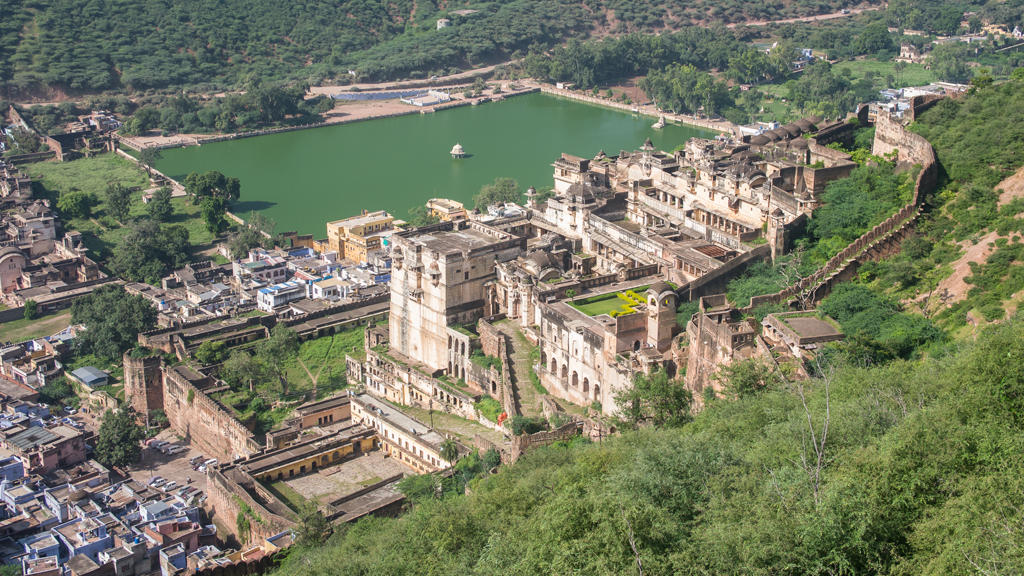
You will be left spellbound looking at the murals and miniatures of the astonishing 16th-century City Palace in Bundi, the quaint town with a mysterious aura. Depicting the purest form of Rajput architecture, the unique styled murals and miniatures beautifully depict scenes from the life of Lord Krishna. They reflect fairy-tale-like vividness, rushing waters, rich vegetation and dramatic night skies, a treat for the eyes. In the 18th century, Bundi made a great contribution to the trends of the time- Bundi style of painting. The Chitra Shala in this town has some of the finest examples of this school of painting.
Your Bundi tour itinerary must include its iconic step-wells which dot its streets and vicinity abundantly. Rani- Ki- Baori (step-well) dates back to 1770 and it brims with rainwater. The wide steps lead down to the water under an amazing torana (archway) lined with a frieze of elephants and the carvings on the walls depict 10 incarnations of Lord Vishnu.
Perched on the top of a 150-metre hill rising above the town is the 13th-century Taragarh Fort, also known as Star Fort, whose remains still echo its glorious past. This grand fort has impressive bastions and battlements and offers a bird’s eye view of the town. Apart from these lakes and havelis are waiting to be explored in and around Bundi. This town was established in the 14th century by the Rajputs and was originally known as Haraoti.
Kota: A town with a sense of excitement in its architectural structures!
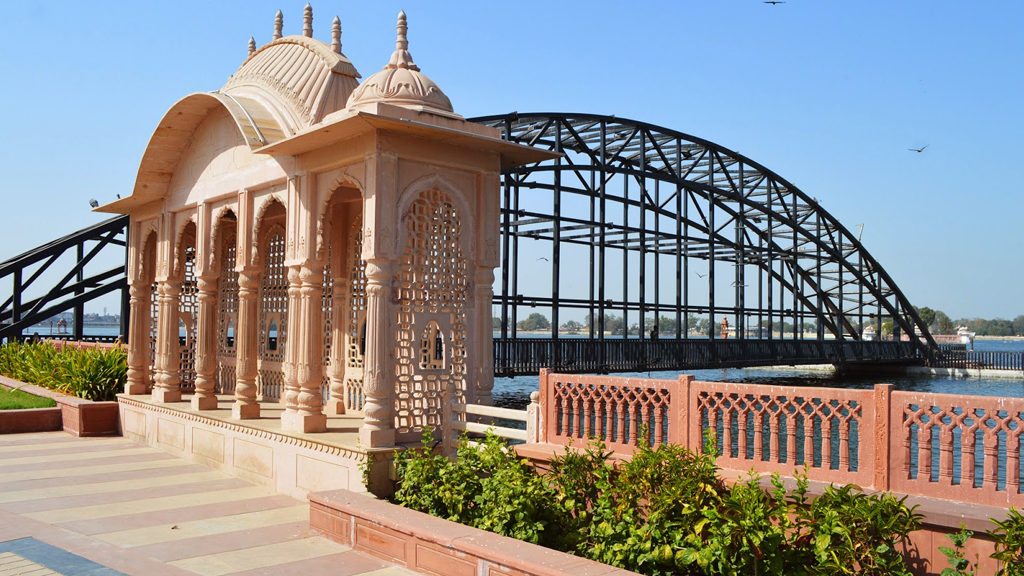
Kota is synonymous with the elegant and beautiful Kota Doria sari, a fine blend of silk and cotton threads. Even today the saris are weaved traditionally. It is the third-largest city of Rajasthan with remarkable industrial growth but at the same time, its old-world charm is still intact which makes it one of the wonderful tourist destinations of Rajasthan. Visit its rambling City Palace which was built over years by the then successive rulers, resulting in a colourful mix of brilliant architectural structures.
Enjoy a boat ride on the River Chambal in Kota, visit the Seven Wonder Park boasting miniatures of 7 wonders, and get lost in the picturesque beauty of Kishore Sagar Lake and the Jagmandir, a fascinating architecture made of red sandstone, in the middle of the lake. An enthralling attraction of Kota tour that should not be missed is the Garadia Mahadev Temple beautifully located at an altitude of 500 feet over the gorge through which the Chambal River passes. Kota, located close to Bundi, was once a part of Bundi and they share a common history and artistic heritage.
Ajmer: The distinctive town of Rajasthan!
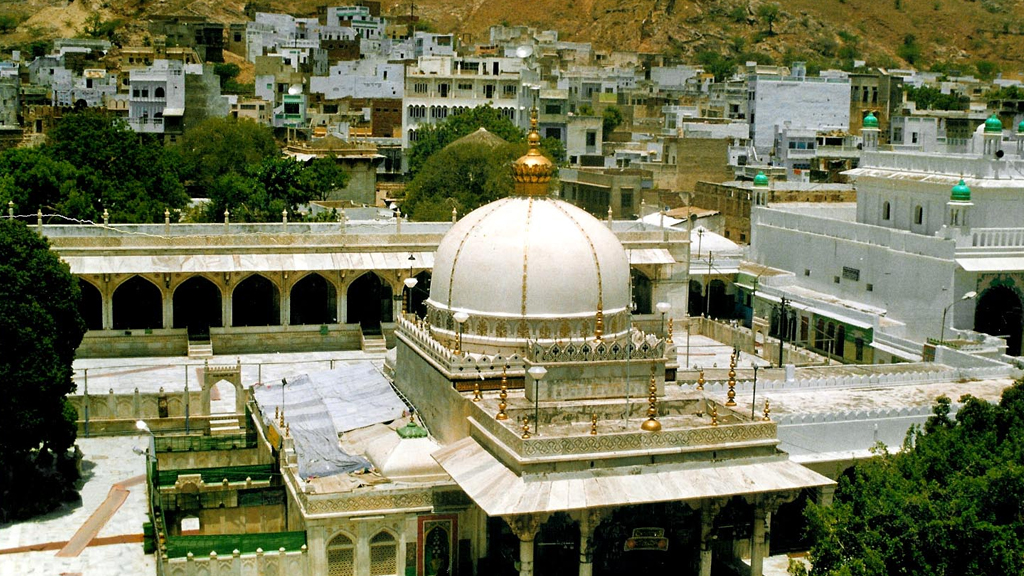
Synonymous with the famous Dargah Sharif, Ajmer is the largest town in Rajasthan located between Jaipur and Jodhpur. The Chauhan Rajputs established this town in the 7th century and it remained an important centre of Rajpur power until 1191 when it was captured by Muhammad of Ghori and later absorbed into the Mughal empire by Akbar.
Visit the Dargah Sharif at the heart of the old city as this is the most famous attraction of Ajmer drawing pilgrims and tourists from far and wide. This Dargah is the tomb of the revered Persian Sufi saint Muin-ud-din Chishti. During Urs Mela festival, celebrated during May/June, it receives thousands of pilgrims. Enjoy hearing the qawwals (religious singers) chanting the saints’ praises even during the quiet days. Also, visit the mesmerising ruins of Adhai din ka Jhonpra mosque which was originally a Sanskrit college later converted into a mosque by Muhammad al Ghori in 1198. It’s one of the finest examples of medieval monuments with ornate calligraphic inscriptions.
Chittorgarh: The legacy of extraordinary forts and battles!
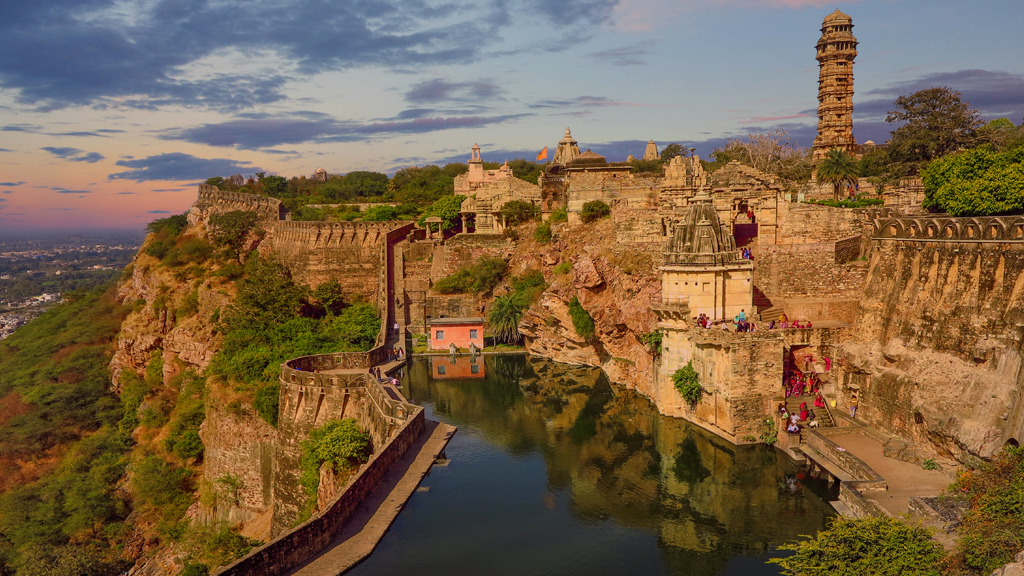
As you step into the city of Chittorgarh, the most historic of all, you will be overwhelmed with its rustic charm, seemingly impregnable fortifications, palaces and history. The Chittorgarh Fort located on a hilltop is one of the most fascinating forts of Rajasthan and a major attraction of Chittorgarh. During the era of raja-maharajas, this city served as the capital of Mewar and was sacked three times in the 8th century. Spanning across 700 acres, this fort is a UNESCO World Heritage Site.
Built in the 7th century by Maurya Rulers, Chittorgarh Fort was ruined by the Mughals. Its remains are a testimony to how magnificent the architecture of this fort was. The palace like Fateh Prakash is beautifully designed and aesthetically decorated giving a visual treat to the eyes. There are other palaces, temples and caves worth exploring in this city.
Alwar: The hidden gem of Rajasthan!
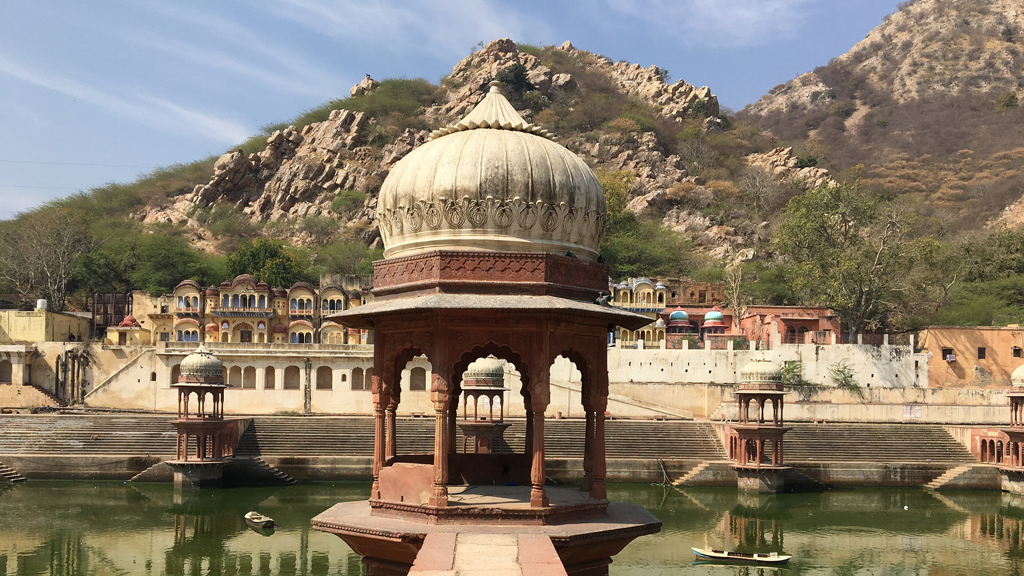
People often make the mistake of not including Always City in their Rajasthan Tour itinerary, but you should not! It was founded by Rao Pratap Singh in 1770. Alwar is an amazing city with attractions like palaces, forts wildlife. Treat your senses with an amazing blend of Rajasthani and Mughal styles of architecture at the City Palace. Its marble pavilions, impressive towers, walls and ceilings are embellished with intricate murals and mirrorwork. Embark on a jeep safari in Sariska National Park to catch glimpses of a variety of wildlife including tigers, leopards, jackals, wild boars, etc. Alwar Museum, Siliserh Lake Palace, Sariska Palace and Bala Qila Fort are the other Alwar tour attractions.
Ranthambore: Wilderness at its best!

Ranthambore is one of the best places to spot a wild tiger in its natural habitat. If you are a wildlife enthusiast, this is a must-visit famous destination on the Rajasthan tour itinerary. Near Jaipur, the town of Sawai Madhopur serves as a gateway to the world-famous Ranthambore National Park. The tiger population here has grown steadily over the past decades. Near the Park is the Ranthambore Fort dating back to the 5th century.
Mandawa: The town with the artistic streak!
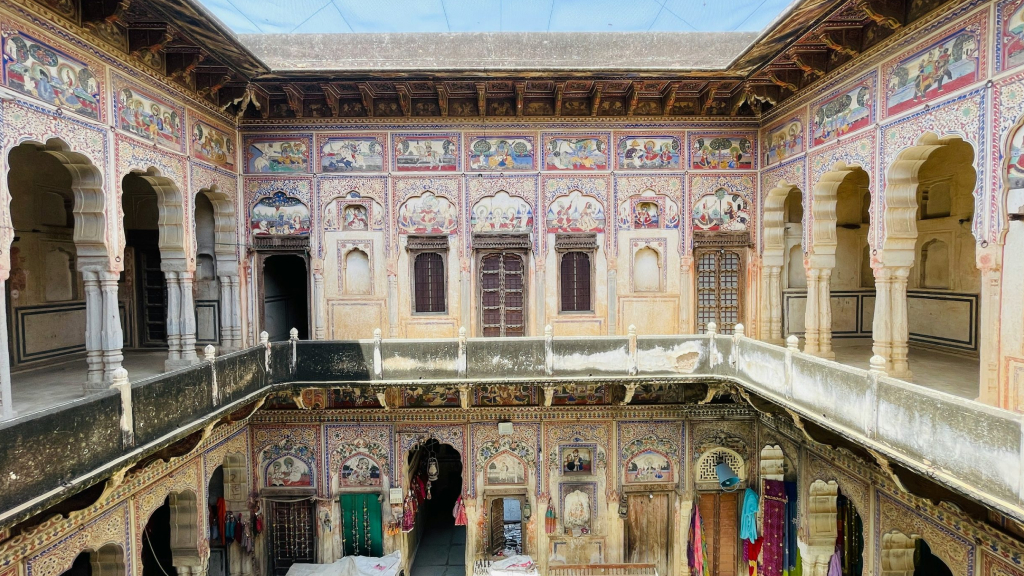
Small in size but magnificent in its architectural beauty, Mandawa town is located in the heart of the Shekhawati region of Rajasthan. Mandawa was established by the Shekhawats in 1756. Stroll through its alleys dominated by the state’s some of the finest forts with Mandawa Fort deserving special mention. The streets around the fort are dotted with several painted havelis in various stages of decay. The Havelis are exquisitely decorated with paintings that are simply breathtaking. A Mandawa tour will surely transport you to a different era altogether!






